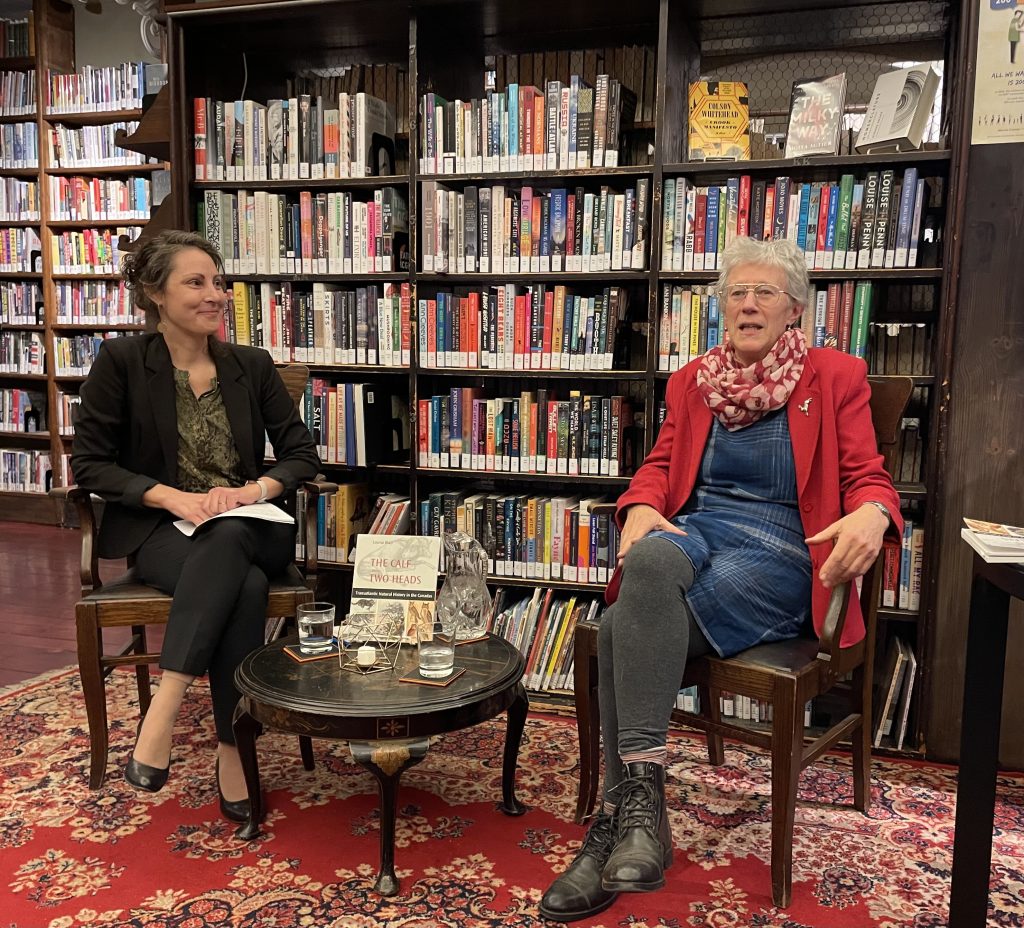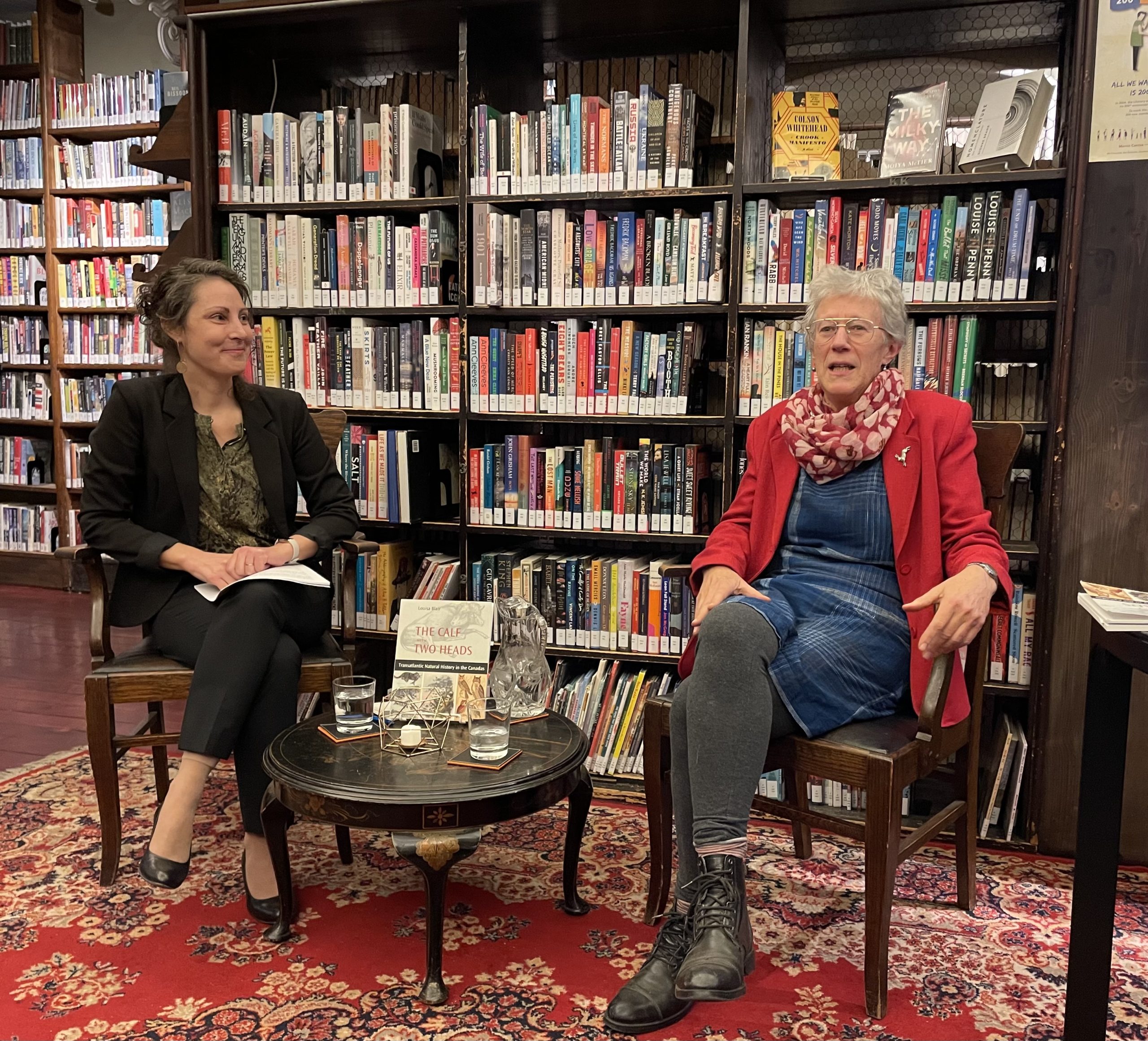Louisa Blair launches The Calf with Two Heads
Shirley Nadeau
shirley@qctonline.com
It was practically standing room only in the library of the Morrin Centre on Nov. 16 as local writer, editor and translator Louisa Blair launched her new book, The Calf with Two Heads, subtitled Transatlantic Natural History in the Canadas.
The beautifully illustrated book contains fascinating stories of 19th-century Canada and the curious European men and women who came here to explore, map, draw, collect and exhibit nature and the natural phenomena they discovered.
After being introduced and welcomed by Kathleen Hulley, head of the Morrin Centre’s library and collections, Blair said, “I’m very touched that you’ve all come here in this library, which is one of my favourite places in the whole world. It’s been connected to my family history for a long time…. Before this building held this library, it was a prison. In fact, my great-great-grandmother was at the last hanging in Quebec City as a four-year-old child, brought by the family maid, and it was something that she – and we – have never forgotten!”
Hulley asked, “How did your perception of the natural world change after your move back to Canada from rural England?” Blair replied, “We spent our childhood [in England] wan- dering around in the woods, in nature all the time…. We were always collecting stuff and bringing it home, which was kind of how museums were started…. When we got back to Canada, it was a whole dif- ferent countryside; the trees, birds and plants were all some- what different. It was similar for people who came over here in the 18th century – it was, like, this huge country, and it was so different and overwhelming.”
Hulley: “How did this book come about?”
Blair: “It was a combination of a lot of things. I’ve always been interested in nature and … the Morrin Centre had a huge impact on me because I did research on it for a book about the history of the Liter- ary and Historical Society. Many of the first members of the society were some of Canada’s first amateur scientists. They were very keen on identifying every plant, tree and geological formation. I was just blown away by their real passion to discover this new (to them) land. I was also asked by the Musée de la Civilisation to do research for an exhibition they were doing in league with the Natural History Museum of London. My research was on the Canadian side of the origin of museums. So I was right in that world and I just couldn’t stop.”
Hulley: “Could you explain the significance of the title The Calf with Two Heads?
Blair: (jokingly) “Well, it’s really a book about deformed baby animals…. It’s because early museums were fascinated with strange, grotesque and deformed creatures. Every self-respecting educational institution in Quebec had its own natural history museum; it was the way natural sciences were taught. There were collections of stuffed animals and birds in colleges and schools everywhere. Many ended up at Université Laval, where they have an enormous collection of stuffed creatures, and one of them is a calf with two heads. I feel like a bit of a calf with two heads as well, because I’m from here, but I grew up in England and I came back here and now I’m living in two cultures.”
Blair’s book also contains sections about drawing nature, highlighting the works of many Quebec botanists who were women. Early explorers such as Charles Darwin, Captain James Cook, Captain Joseph-Elzéar Bernier and John Franklin, explorers of the Northwest Passage and the disastrous Canadian Arctic Expedition of 1913-1918 are also highlighted. Blair read a dramatic section about the sinking of the expedition’s flagship, the Karluk, which became trapped in the ice.
Blair’s other books include The Anglos: The Hidden Face of Quebec City and Iron Bars and Bookshelves: A History of the Morrin Centre, which she co-authored with Patrick Donovan and Donald Fyson. Her translation of Robert Lepage’s play 887 was nominated for a Governor General’s award. Her exhibition on natural history in Quebec, Blossoms, Beetles and Birds, is currently on display at the Morrin Centre.


 Kathleen Hulley, head of the Morrin Centre’s library and collections, listens as author Louisa Blair talks about her latest book, The Calf With Two Heads. (Photo by Shirley Nadeau)
Kathleen Hulley, head of the Morrin Centre’s library and collections, listens as author Louisa Blair talks about her latest book, The Calf With Two Heads. (Photo by Shirley Nadeau)